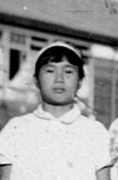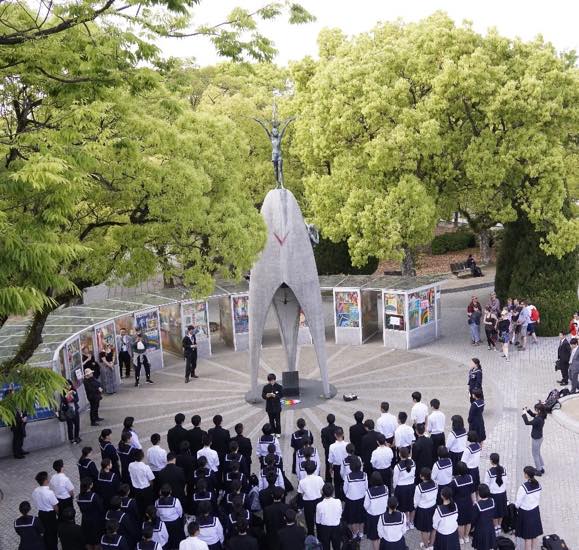
(provided by Mrs.Tomiko Kawano)
At the age of two, Sadako Sasaki experienced the atomic bombing at her home in Kusunoki-cho (now part of Nishi Ward, Hiroshima), about 1.6 kilometers from the hypocenter. She was then exposed to the radioactive black rain that fell in the aftermath of the blast. However, she suffered no injuries at the time and grew up as a healthy child. She was good at sports and dreamed of becoming a physical education teacher at a junior high school one day.
When she was in sixth grade, though, she fell ill and was unable to enter junior high. The illness was diagnosed as leukemia and she became hospitalized at the Hiroshima Red Cross Hospital. During this time, the hospital received a gift of a thousand paper cranes from the city of Nagoya. At that point, she began folding paper cranes with the wish to recover from her illness. (Japanese legend holds that folding a thousand paper cranes will grant a wish.)
Despite her efforts, her condition worsened. After eight months in the hospital, she passed away of A-bombed-induced leukemia on October 25, 1955. It has been said that she died after folding 644 paper cranes, but the Peace Memorial Museum believes that she actually folded more than 1,300 paper cranes before her death, based on the testimony of family members.

On May 5, 1958, three years after Sadako’s death, the Children’s Peace Monument was unveiled at the Peace Memorial Park. Sadako’s former classmates of the sixth grade “Bamboo Class” at Noboricho Elementary School launched the campaign to raise the monument. After hearing the idea that they could help create a monument to console the spirits of Sadako and the children like her who lost their lives to the A-bombing, they distributed handmade flyers at a nationwide meeting of junior high school principals. This gathering took place in Hiroshima and Sadako’s friends solicited the support of the participants. As a result, donations began to flow in for this cause from across Japan. The student councils at schools in Hiroshima then formed a group called the Hiroshima Society of School Children for Building World Peace.

Alongside Sadako’s friends, the members of this group pursued fundraising activities to realize the monument. About two and a half years after the campaign began, the monument was finally unveiled on May 5, 1958. After the monument was established, the story of Sadako Sasaki and her paper cranes became known around the world. This awareness began to grow in 1956, one year after Sadako died, when Robert Jungk, an Austrian journalist, visited Hiroshima and heard about Sadako’s story. Mr. Jungk wrote a book titled Children of the Ashes, which featured Sadako, and this book was a worldwide success. After that, other writers, in a range of countries, created various books based on her life, which spread the story even further in the world.
Each year, about 10 million paper cranes are offered to the Children’s Peace Monument from places around the world. In all, more than 200 million paper cranes have been dedicated to the monument since fiscal year 2002, the year that the City of Hiroshima began keeping count of the paper cranes offered to the monument.






